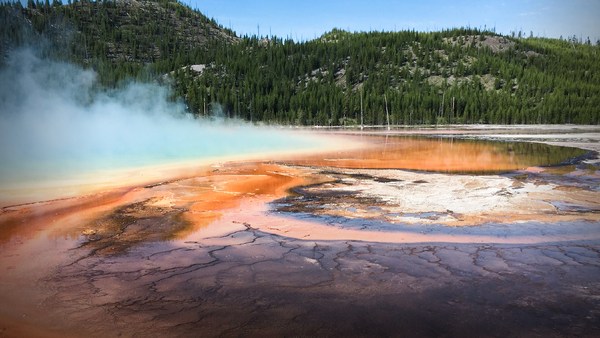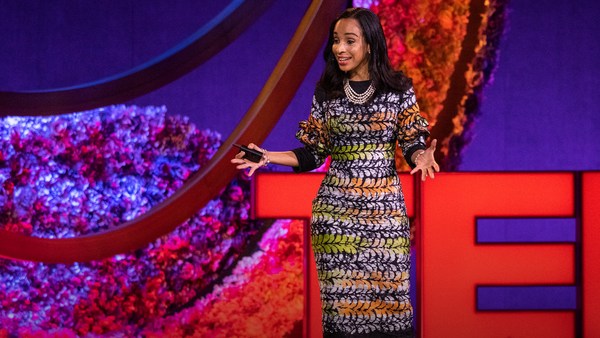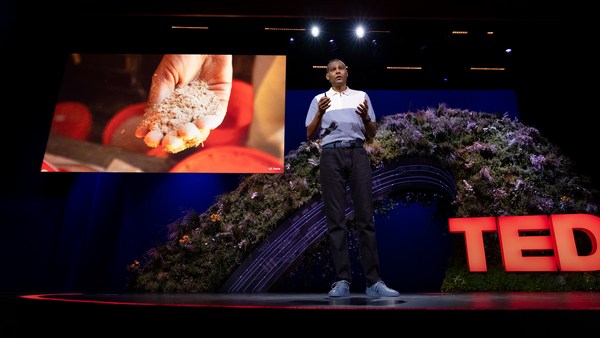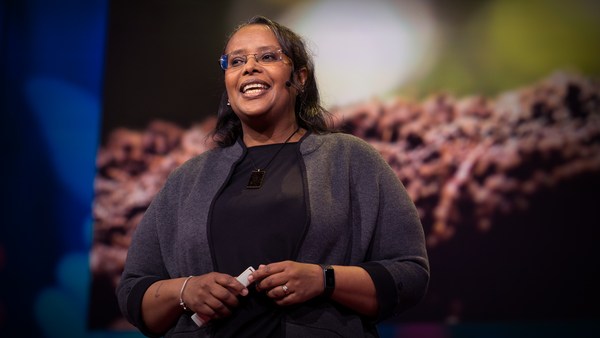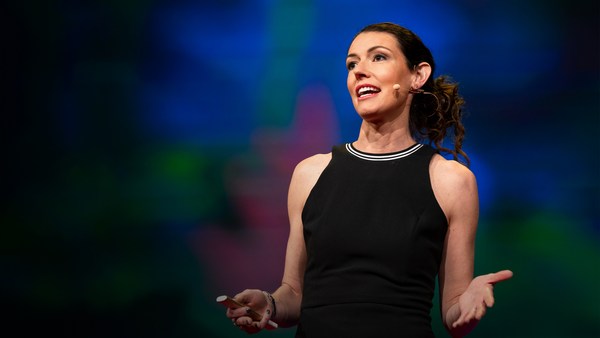Under our feet, there is an unseen world more diverse than all the tropical rainforests combined. Teeming with microbial life and critters, large and small, this hidden world of soil is on every single continent. But most of us know little to nothing about this vast world under our feet. And for most of my life, I was no exception.
I grew up [a] very curious and adventurous kid. I spent a lot of time climbing trees and falling out of them. And I spent a lot of time getting really dirty. In college, I had to take a class for a science requirement, and I was shocked to discover that being really curious and loving dirt could be a legitimate career. So it took no convincing whatsoever for me to change my major, and that's how I became an ecologist.
In graduate school, I studied how the loss of a seed disperser, in this case, the winnow ant, affected the plants that they disperse. In my research site, we were discovering that these ants were moving up in elevation to escape a rapidly changing climate. But they were leaving the plants they dispersed behind. So while I came to grad school to study ants, I all of a sudden found myself studying climate change. And because ants nest in soils, I had to learn a lot more about soil.
What I couldn't have predicted, as that young, curious, budding ecologist, was that I would spend the next decade of my life thinking about the invisible army of soil microbes and how we can harness their awesome powers to help address climate change.
But before we get to all of that, let's start at the beginning. Soils are considered to be the skin of the Earth. They're only a few meters thick, but they support all agriculture and every single terrestrial biome. Soils help protect our food supply, clean our water, boost our immune systems, and they serve as a source for some critical medicines, including many that have yet to be discovered. Without Earth's exceedingly thin layer of soil and its multitude of organisms, we would not eat, and humanity as we know it may not exist.
And soils, like many good things, they take time to develop. They form over hundreds to thousands of years as rocks break down and plants and animals decompose. As soils form, they accumulate and store carbon. In fact, there are billions of tons of carbon stored underground. Two to three times more than what we have in the atmosphere. Plants and soil work in collaboration to drive the single most important transformation of carbon on this planet, photosynthesis. Plants take carbon dioxide from the air, and they combine it with water and sunshine to create sugars. And of course, to grow plants. Plants and their sugars eventually decompose in the soil, feeding the microbes. In fact, most of the carbon that comes in through plants ends up in soil at some point. The carbon cycle continues. Microbes and their carbon eventually break down, and the carbon from the microbes sticks to soil particles, creating what we call soil clumps or aggregates. Because microbial carbon is sticky. So when that microbial carbon ends up in a clump, it's physically protected from further decomposition. And what we know now is that the majority of soil carbon that is sequestered is actually dead microbes or what we call microbial necromass. That necromass can stick around in soils for decades to millennia, especially if we leave soils undisturbed.
But over the last 12,000 years, we have lost billions of tons of carbon from our soil as humans converted grasslands and forests into agricultural fields and range lands, building roads and cities. One of the major drivers of that loss was the plow, which, at the time, was a major technological breakthrough that really revolutionized agriculture and altered the trajectory of human history. With each pass of the plow, those plant roots and soil aggregates that we know are really important are broken apart, exposing carbon to decomposition. Today we use more than a third of our land to feed and clothe billions of people on this planet. But we're losing our soils at an alarming rate, and with it, we're losing their fertility. Without that soil, it's going to be a lot harder to feed what is going to be close to 10 billion people on this planet by 2050. That's going to put a lot more pressure on what is already a disappearing and resoundingly underappreciated resource.
There is no machine that can bring soil back. No technology that can do what thousands of years of rock weathering and biological activity have achieved. But we can build our soils and put more carbon underground with a little help from plants and microbes. Rebuilding soil is going to require us to fundamentally rethink our reliance on technology and chemicals to deliver what soils can do on their own: support life.
And life in soil is mostly microbial. The Dutch scientist, Antoni van Leeuwenhoek, saw tiny organisms he called the "wee beasties," under his microscope about 350 years ago. And with the rapid innovation of molecular and computational tools, we are finally getting a sneak peek at who they are and how they make their way in the world.
Here's the thing. A teaspoon of soil holds billions of organisms, things like bacteria, fungi, protists and archaea. These microbes are the movers and shakers of nature's carbon cycle. They drive really important processes in soil, they take organic matter and convert it into complex carbon molecules. And having more carbon in soil is transformative. As carbon accumulates, agricultural fields can hold on to more water and more nutrients, building resilience that helps them deal with the ups and downs of a changing climate. That resilience means plants can grow more consistently, even when the weather is fickle. And the awesome thing is carbon-rich soils help buffer us against what is an uncertain climate future. The trick is to really rethink how we do agriculture.
So there is the good news,
which is there are some tried and true ways
that we can get more carbon in our soils and build our soils back. We can plow less, and we can make sure that we have roots in the ground year round, feeding the microbes and powering that microbial engine humming under our feet. And we can do this.
The other thing is, diversity is the key ingredient in this recipe. Diverse plant communities support diverse microbial communities that can transform and store more carbon. Diversity is good for soils, and it's good for climate mitigation. Just like we need every microbe, we need every farmer and rancher, every climate solution and every solver.
So ... Healthy, carbon-rich soils matter today more than ever. The other great thing about carbon-rich soils is they help farmers have more consistent agricultural operations and more sustainable ones that can withstand the ups and downs of a changing climate. That's a huge win for the people that grow our food, it’s a win for climate, and it’s a win for us consumers. So how do we do it?
Well, there are three simple things we can do. Number one, we have to protect our soils and the carbon they already hold. Number two, we can get more carbon underground by growing diverse, climate-adapted crops. And number three, we can let the microbes do their thing. Leave them alone by leaving the soil undisturbed. It sounds simple, and that's because it kind of is. But there are some questions that are left to be answered, and there's a lot of room for us to innovate. We need to track and measure our climate progress. We need to develop more climate-resilient crop varieties that can grow deeper roots and pump carbon underground deeper. And we need to rethink our economic models and agriculture and help support and incentivize these carbon-sequestering agricultural practices. So lots of room for innovation, lots of room for research. Good news for us scientists.
But we don't have time to waste. Climate change is here and it's affecting all of us, whether we know it or not. It's affecting every single ecosystem, including agriculture. Soils are the literal foundation of life on this planet, the reason that we can eat and the climate solution just waiting to be unlocked. So let's build back our soils, help our planet by looking down to the ground.
Thank you.
(Applause)
